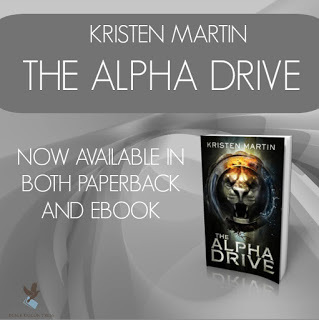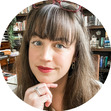How To Come Up With Story Ideas
Today I’m going to answer a viewer’s question in more detail: “How do you come up with ideas for a story?” If you'd rather watch the video on this topic, feel free to click play below. Otherwise, keep reading!
For some writers, ideas randomly come to them – they write them down and start creating subplots and weave everything together to create a well-connected story. But for other writers, coming up with story ideas can be tough. Many of us can’t just pull ideas out of thin air, especially ones that haven’t already been done before. Does the world really need another vampire/werewolf/love triangle? Maybe, but only if you can put a truly unique and different spin on it.
If there’s one thing I want you to take away from this post, it’s that your story ideas must be original. Don’t try to copy-cat other writers and their plotlines because guess what? You’ll get to writing and realize that you’re basically rewriting what’s already been written. And if it’s already been written, it’s already been read, so it’s probably worth brainstorming some new ideas. You may be thinking, “But Kristen, all ideas have already been done before–boy meeting girl, an alien species invading Earth, a dystopian setting where a hero tries to overthrow the bad guys, good vs. evil, etc." And you know what I’d tell you? That you’re right! It’s all been done before.
But what makes your story unique and different is the spin you put on it. All of those little subplots that make the relationships and connections between your characters stand out really do matter. For example, I wrote a YA dystopian novel called THE ALPHA DRIVE. How many dystopian novels are out there? A LOT. In the past couple of years, there was an influx in the market of these types of stories. But was mine about a sickness that plagued the land, causing some crazy dictator to take over and make everyone’s life a living hell? No, because it’s been done before. Was it about competition between kids to fight to the death to keep the peace and entertain the higher classes? No, because it’s been done before. Instead, I took elements of a dystopian world and added my own Matrix-like twist to it with an alternate reality where the focus was more on the action and the plot instead of the teenage love-triangle. Here are 7 tips for coming up with story ideas for your book. Why 7? Because that’s how many I could think of.
1. Determine the genre.· What do you like to read? Crime, fantasy, science fiction, contemporary? Take a look at your bookshelf and do a quick inventory of the different genres you’re housing. Chances are, the majority of your books will be in either 1 or 2 genres, and if you like reading those types of stories, you’ll probably enjoy writing them too. If not, that’s fine. Just try to figure out what genre you want to write.
2. Determine the audience.· How old will your readers be? Children? Young Adult? New Adult? Adult? Just as an FYI, if your main characters are 12 and younger, you are writing a children’s book. If your characters are ages 13-18 (think high school aged), you’re writing a Young Adult book. If your characters are 19-30 (think college aged), you’re writing a New Adult Book. For characters older than 30, you’re writing an Adult Book. Don’t forget that by determining your audience, you’re also setting yourself up for the tone and themes of your book. For example, if you want to have alcohol, sex, or drugs in your novel, you may want to stick with a New Adult or Adult audience. Although these aspects have been included in some YA novels, I would recommend staying away from them. Think of it from a parent’s point of view – would parents really want their 13 year olds reading about heavy drinking at a party or intense romantical (yes I just made that word up) scenes? Probably not. That doesn’t mean that YA can’t have romance – it’s just a softer version and doesn’t go into as much detail.
3. Determine your theme· A theme is a universal idea or message that stretches throughout an entire story. A book’s theme is very important, especially when you’re writing a series because that theme is going to be present in each one of your books. You have your typical good vs. evil (think Harry Potter here), individual vs. society (think Hunger Games and Divergent), love sustaining or fading with a challenge (think Twilight). I will link down below a website with a list of 101 themes for you to peruse. Your book can have more than one theme, just like it can have more than one plot. You can have sub-themes. Just make sure you have one major theme (like you have one major plot), then you can add in sub-themes and sub-plots to keep your story from falling flat.
4. Brainstorm· So now that you have your genre, target audience, and theme, it’s time to start brainstorming! Most likely, you’ve already had a few ideas floating around in your head that maybe you’ve jotted down in a notebook somewhere. If not, that’s okay. You can start from scratch. Grab a large piece of paper and write your main theme in the center and draw a circle around it. Underneath the theme, write the main struggle or hardship your character will face and has to overcome. If you don’t know it yet, that’s okay. Sometimes it’s easier to brainstorm how you want the book to end and then work backwards from there. Draw branches out from that main circle, like a tree, with any ideas that come to mind for your story. Even if they don’t make sense, write them down! You’d be surprised how later on when you’re actually writing your story, some of those nonsense ideas can actually be reworked into subplots that add more depth to your story. There is no such thing as a bad idea – each one is valuable, so write it down!
5. Use resources· If your idea well is running dry, there are a number of different resources at your disposal to help you generate ideas. The first one (and my personal favorite) is The Writer’s Idea Thesaurus by Fred White. When I’m braindead or struggling to think of ideas or what should happen next in my story, I’ll pull out The Writer's Idea Thesaurus, open it to a random page, and read some of the plot suggestions. I normally don’t use exactly what is written on the page, but it does usually give me a spark of inspiration where I’ll use a different variation of it. Or if I’m lucky, I’ll get hit by Cupid’s Creative arrow and come up with something entirely new. You can also think of books you’ve read or movies you’ve watched where maybe you didn’t like how they ended or didn’t like a certain scene. Write down what you would have done to make it better. Doing this will help flex that creative muscle and will get your mind unconsciously brainstorming different subplots for your own story.
6. Use your ideas to make a rough outline· The best way to do this is to write every single idea from your large sheet of paper on a notecard. Then, try to organize the notecards in such a way that it makes a semi-cohesive story. Notecards are a great tool because if you want to move a scene from the end of the book to the beginning, all you have to do is slide the notecard up to wherever you want it. Also keep a stack of blank notecards next to you while you’re doing this so that as more ideas come to you while you’re organizing your story, you can write them down and add them in as needed.
7. Just write.· Once you have a basic outline, thanks to your handy-dandy notecards, just start writing. Even if it’s terrible, even if it doesn’t fully make sense to you yet, just write. The writing process is all about discovering your story. You, as the writer, take yourself on a journey to discover your story’s potential and all the things it can be. It’s crazy how you’ll start writing and as you’re writing Chapter 1, an idea for what should happen in Chapter 2 pops into your head, and then the next chapter, and the next. You discover your story as you write, so if you don’t just start writing, you’ll never know the potential your story has. Trust me, it might sound scary, but it works. The first draft is for your eyes only anyway so if you write total crap one day, you can always take it out! Just write.
So there you have it, 7 tips to help you come up with story ideas for your next (or first!) book. If you haven't signed up for my newsletter yet, you can do that on the homepage. Tomorrow, an early sneak peak of the cover for The Order of Omega will be sent to all newsletter subscribers. I will also be doing the cover reveal in next Tuesday's post.
Thanks for reading!

Until next time,

Published on April 12, 2016 06:47
No comments have been added yet.



